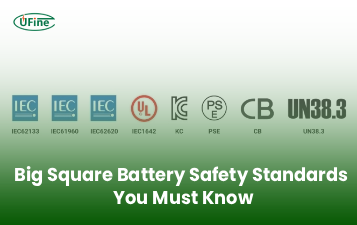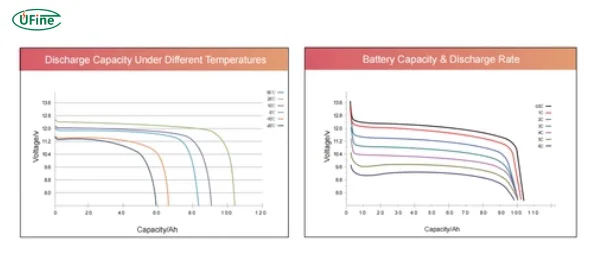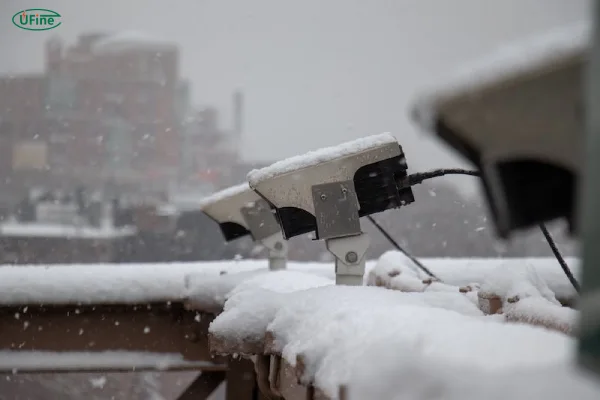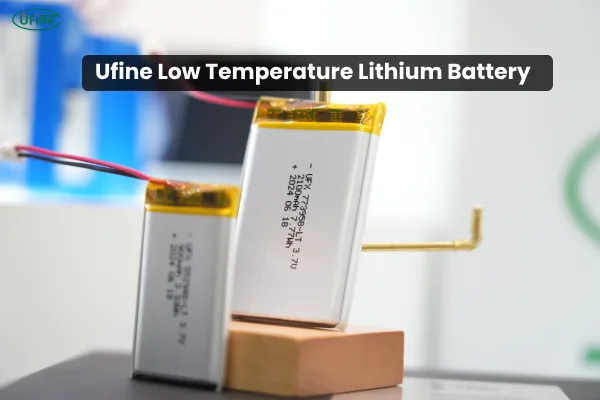
- Part 1. Why temperature matters for outdoor camera batteries
- Part 2. Common symptoms of temperature-related battery issues
- Part 3. Battery chemistry matters — why lithium is preferred
- Part 4. Best practices for outdoor camera batteries in cold weather
- Part 5. Protecting outdoor camera batteries in hot weather
- Part 6. Choosing the right outdoor camera battery
- Part 7. Seasonal maintenance tips for optimal battery performance
- Part 8. Final thoughts
- Part 9. FAQs
Whether you live in a frigid northern climate or a sweltering desert, understanding how temperature impacts outdoor camera batteries is essential for getting the most out of your investment. This article explores the science, practical considerations, and solutions for optimizing battery performance across temperature extremes.
Part 1. Why temperature matters for outdoor camera batteries
Batteries rely on chemical reactions to store and release energy. These reactions are highly sensitive to temperature. In general:
- Cold temperatures slow down the chemical processes inside batteries, reducing their ability to deliver power efficiently.
- Hot temperatures can increase the internal pressure of a battery and accelerate degradation, even to the point of thermal runaway.
For outdoor camera batteries, this means that:
- Cold weather can cause cameras to shut down unexpectedly.
- Hot conditions may shorten battery life or pose safety risks.
Key Temperatures to Know:
- Below -10°C (14°F): Most lithium batteries experience significant voltage drops.
- Above 60°C (140°F): Risk of overheating and permanent damage increases.
Part 2. Common symptoms of temperature-related battery issues
When temperature affects your outdoor camera battery, you’ll likely experience:
- Reduced run time in the winter months (sometimes up to 50% less).
- Charging failure when attempting to recharge in extreme cold or heat.
- Sudden shutdowns, especially when temperatures fluctuate rapidly.
- Decreased battery lifespan due to prolonged exposure to high heat.
Understanding these symptoms can help users distinguish between a defective battery and one simply affected by environmental conditions.
Part 3. Battery chemistry matters — why lithium is preferred
Most outdoor security cameras today use lithium-ion or lithium polymer (LiPo) batteries. These chemistries are favored for their high energy density, lightweight design, and rechargeability.
But even within lithium chemistries, not all batteries are created equal.
- LiFePO4 (Lithium Iron Phosphate) batteries have excellent thermal stability and are well-suited for extreme temperatures.
- LiPo batteries offer flexibility in design and work well in moderately cold and warm climates.
- 18650 cylindrical lithium batteries, often used in DIY setups, offer high capacity and reasonable cold-weather performance.
📢 Looking for reliable, temperature-resistant outdoor camera batteries?
Ufine Battery is a Chinese custom lithium battery manufacturer that supplies a wide variety of lithium polymer batteries, LiFePO4 batteries, 18650 batteries, ultra-thin cells, high-rate and high-temperature batteries.
Ufine Battery can design and produce batteries tailored to your size, voltage, and performance requirements—perfect for any outdoor camera system.
Contact Ufine Battery today to discuss your battery needs.
Part 4. Best practices for outdoor camera batteries in cold weather
Cold climates pose a serious challenge for battery performance. But with the right practices, you can maintain camera functionality even in sub-zero temperatures.
What Effect Does Low Temperature Have on Lithium Batteries?
Tips to Maximize Battery Life in the Cold:
- Use insulated enclosures or weatherproof housing.
- Preheat batteries before installation (bring them indoors first).
- Select batteries rated for -20°C or colder.
- Use solar panels or AC power if available to reduce battery strain.
- Regularly check battery voltage via the camera’s app.
💡 Ufine Battery’s high-performance LiFePO4 and cylindrical lithium batteries are tested for reliability in extreme cold, making them ideal for arctic or mountain deployments.
Part 5. Protecting outdoor camera batteries in hot weather
While cold is problematic, excessive heat can be just as damaging—especially in sun-drenched areas like Arizona, southern Europe, or the Middle East.
Heat Management Strategies:
- Install cameras in shaded or ventilated areas.
- Avoid placing battery packs in direct sun.
- Use high-temperature rated battery packs.
- Check for swelling or deformation—a sign of overheating.
- Limit charging during peak heat hours if you’re using solar chargers.
Many battery-related failures in summer months result from exposure to high ambient temperatures combined with heat buildup from enclosed housing.
🔥 Ufine Battery’s custom high-temperature lithium battery solutions are engineered to operate safely and efficiently in environments exceeding 60°C.
Part 6. Choosing the right outdoor camera battery
Before buying replacement batteries or building a custom outdoor camera setup, consider the following:
1. Operating Temperature Range
Check the battery datasheet for the operational and charging temperature ranges. Many batteries cannot be charged below 0°C or above 45°C.
2. Battery Capacity
Colder weather increases current draw, so a higher-capacity battery may be required in the winter months.
3. Form Factor and Mounting
Ensure that the battery shape (cylindrical, pouch, thin-film) fits your camera’s design.
4. Battery Certification and Safety
Always use batteries with CE, UN38.3, or UL certifications to ensure safety in harsh environments.
🛠️ Need a custom battery solution? Ufine Battery can create lithium battery packs that match your specific shape, voltage, current, and temperature tolerance needs for outdoor cameras and other surveillance devices.
Part 7. Seasonal maintenance tips for optimal battery performance
To prolong the lifespan and reliability of your outdoor camera batteries, consider these seasonal checkups:
Spring:
- Clean camera and battery contacts.
- Replace worn or degraded batteries.
Summer:
- Check for overheating signs.
- Move cameras if excessive sun exposure is observed.
Autumn:
- Test battery capacity before cold weather hits.
- Charge batteries fully before temperature drops.
Winter:
- Use battery warmers or insulating materials.
- Reduce camera settings (e.g., motion detection sensitivity) to preserve power.
Regular battery maintenance is especially important in areas with large seasonal temperature swings.
Part 8. Final thoughts
A well-functioning outdoor camera system depends heavily on battery performance—and battery performance is deeply affected by temperature. Whether you’re monitoring a rural property in Alaska or a beachfront home in Florida, choosing the right battery and maintaining it seasonally will save you from unexpected downtime.
Ufine Battery offers robust, custom lithium battery solutions for every climate. From high-altitude chill to desert heat, Ufine’s extensive range of lithium polymer, cylindrical, and high-temperature battery cells ensures your outdoor cameras remain powered year-round.
Part 9. FAQs
Can outdoor camera batteries be recycled, and how should I dispose of them?
Yes, lithium-based outdoor camera batteries are recyclable, but they should never be thrown in regular trash due to the risk of fire and environmental harm. Look for certified battery recycling programs or local hazardous waste disposal centers. Some electronics retailers also accept used batteries for recycling.
What signs indicate that my outdoor camera battery needs replacement?
You should consider replacing your battery if you notice:
- Significantly reduced run time, even after a full charge.
- Swelling or bulging of the battery pack.
- Unusual heat during charging or operation.
- Failure to charge or power the camera despite troubleshooting.
Do software updates on cameras affect battery performance?
Yes, they can. Firmware or app updates may optimize battery efficiency or, in some cases, introduce new features that increase power consumption. It’s a good idea to check the update notes and monitor battery life after any major update.
Are there outdoor camera batteries that support fast charging?
Some lithium battery packs now support fast charging technologies, especially when paired with compatible chargers and smart Battery Management Systems (BMS). These systems allow for quicker charge times without compromising battery health. Ufine Battery offers custom fast-charge solutions for advanced camera setups—perfect for high-traffic surveillance areas.
How does altitude affect outdoor camera battery performance?
At high altitudes, lower air pressure and colder temperatures can lead to reduced battery efficiency. Additionally, some sealed battery enclosures may experience internal pressure changes. If you’re installing cameras on mountains, towers, or aircraft, consider altitude-rated battery packs and consult with a custom battery manufacturer like Ufine Battery.
Related Tags:
More Articles

Big Square Battery Safety Standards You Must Know
Learn key safety standards for big square batteries to avoid fire risks, shipping delays, and compliance issues in EV, industrial, and energy storage projects.
Big Square Battery Applications in Solar & Industrial Equipment
Big square batteries deliver high capacity, stable output, and long life for solar, industrial, and backup power. Explore key uses and advantages.
Big Square Battery vs Cylindrical Battery: Complete 2025 Guide for EVs, ESS & Industrial Devices
Choosing the right battery is key for designers and engineers. Compare big square vs cylindrical batteries to find the best fit for your application.
How to Choose the Right Big Square Battery for Your Device?
If you’re choosing a big square battery for EVs, solar, or mobility devices, this guide helps you pick the right solution for real-world needs.
Big Square Battery Complete Guide: Types, Uses & Buying Tips
If you are choosing a big square lithium battery for EVs, solar, RVs, or AGVs, this guide helps you select the right NMC, LFP, or LTO solution with examples.






